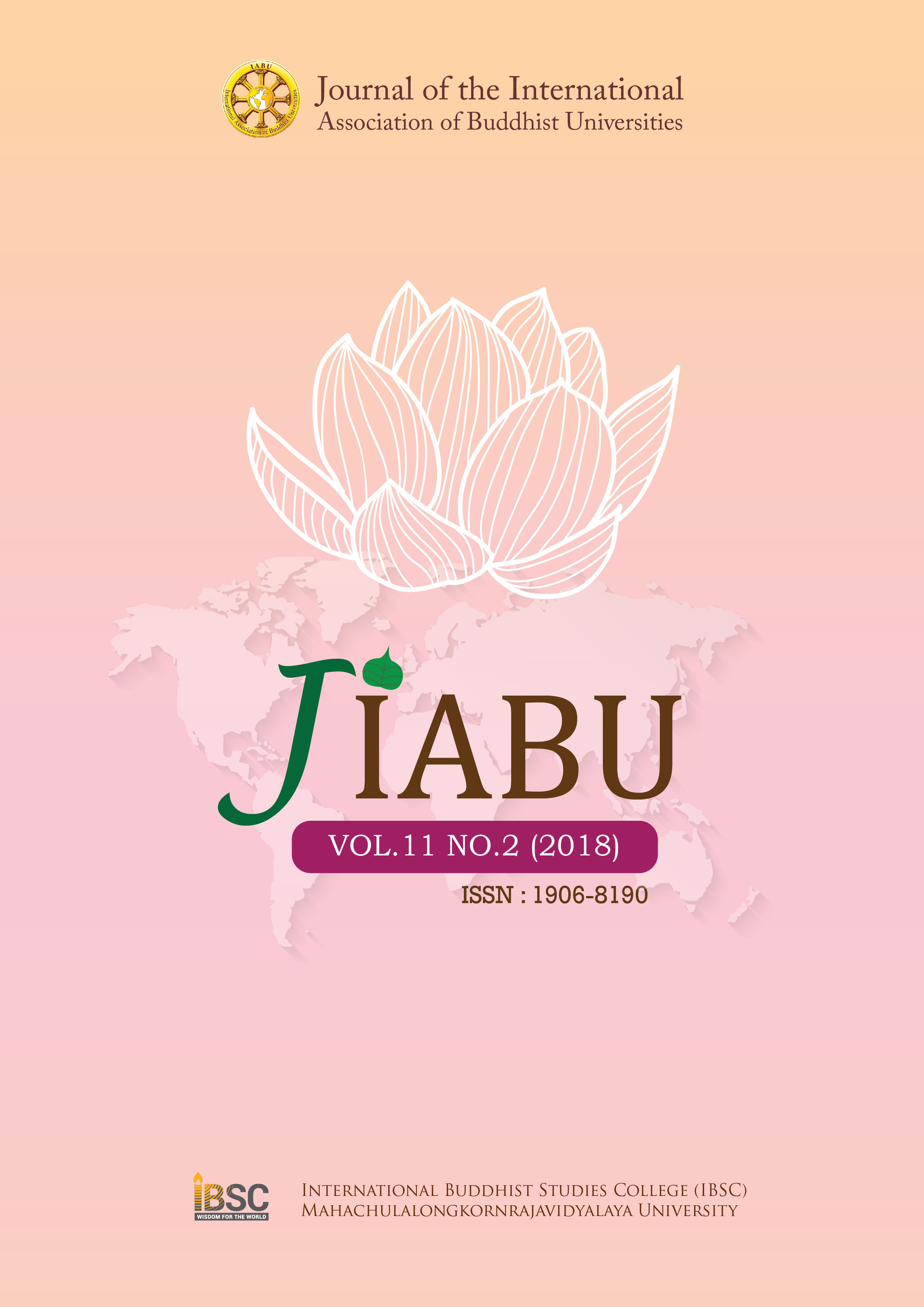An Analytical Study of Action (Kamma) in Theravada Buddhism
Main Article Content
Abstract
This researcher article is about a study of an Analytical Study of Action (Kamma) in
Theravāda Buddhism. Specifi cally, it was for achieving knowledge and understanding about
Kamma Theravāda Buddhism. Apply Kamma results in Daily Life. Kamma means intentional
body, verbal and mental action. In the ultimate sense, Kamma means volition. If the volition
is good, Kamma is good; and If the volition is bad, Kamma is bad. Kamma is a law of nature
and is not controlled by any being. The past actions influence the present, and the past and
the present actions influence the future.
According to Buddhism, this inequality is due not only to heredity and environment
and, “nature and nurture” but also to the operation of the law of Kamma, in other words, to
the result of our own inherited past actions and our present doings. Man himself is responsible
for his own happiness and misery. He creates his own heaven and hell. He is the architect
of his own fate. Kamma is neither fatalism nor a doctrine of predetermination. Every action
produces an effect and a cause comes first and effect afterward, therefore, we speak of
Kamma as ‘the law of cause and effect’. For example, throwing a stone is an action. The
past influences the present but does not dominate it, for Kamma is past as well as present.
The past and present influence the future; the past is the background against which life goes
on from moment to moment, the future is yet to be. Only the present moment exists, and the
responsibility of using the present moment for good or for ill lies with each individual.
Kamma and it working is behind different kinds of existences, the difference in
appearance, characteristic, intelligence, aptitude, wealth, health, etc., among beings. The
personal, social, and psychological differences are due to Kamma. All Kamma bear the nature
of producing the result. Through the development of Eightfold Noble Path, all defilement got
eradicated; and one become an Arahant. After the passing away into Nibbāna, all Kamma
become defunct, and one is free from Kamma.
Article Details
Views and opinions expressed in the articles published by The Journal of the International Association of Buddhist Universities (JIABU), are of responsibility by such authors but not the editors and do not necessarily reflect those of the editors.
References
Sańgaha, (Buddhist Publication Society, Kandy Sri Lanka,2007.
Walshe, Maurice. tr. The Long Discourses of the Buddha (Dīghanikāya). Kandy: BPS,
1996.
PaAukTawya Sayadaw, The workings of Kamma, Myanmar, 2009.
Dr. Mehm Tin Mon, Kamma-The Real Creator, (professor) Yangon, 2007.
Dr. Mehm Tin Mon, The Essence of Visuddhi Magga, (professor)Yangon, 2015.
The Great Exeat Exposition of Kamma, the Mijjhima Nikaya, Cūlakammavibhaṅka Sutta.
The Middle Length Discourse of the Buddha Translation of the Mijjhima Nikaya,
Translated by Piya Tan@ 2003.
Ledi Sayadaw, Maggańga Dipani; The manual of the constituents of the noble path.
Myanmar,1961.
Dr. Nandamālābhivamsa, (tra) Fundanmental Abhidhama Part I,II. Myanmar: 2013.
Ashin Janakabhivamsa, Abhidhamma in Daily life, Mahagandayone Monastery,
Amarapura Writing and preparing the scriptures. Translated by U Ko Lay (professor)
Faculty of Patipatti International Theravada Buddhist Monastery, Myanmar ,1999.
Ashin Silanandabhivamsa, Volition An Introduction to the law of Kamma, Dhammananda
Vihara Monastery, Theravada Buddhist Society of America.1979.


